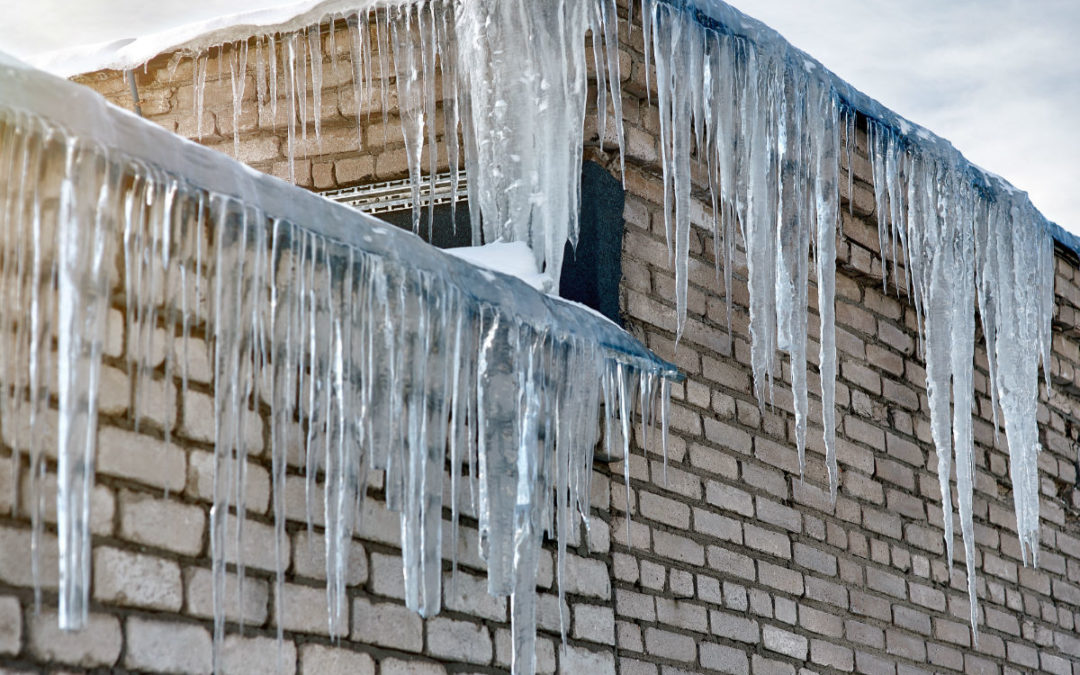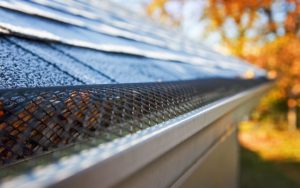Most people associate icicles with the holiday season and crisp, winter air. For many homeowners, however, icicles mean destructive ice dams that can damage roofing and cause other issues in and around a home. Read on to learn why ice dams are such big problems and find out how to prevent them from forming in the first place.
Why They are Such a Problem
While ice dams may seem like a minor nuisance, they can actually cause major issues. Over time, melted water can back up behind them and overflow onto (and underneath) shingles. Eventually, the water can make its way into a home’s interior where it can damage ceilings and interior walls.
If water overflows and pools near a house, it can cause structural damage by affecting the home’s foundation. This could lead to catastrophic damage that could result in thousands of dollars in repair costs.
When large dams break away from a home, they can pull off shingles and gutters. They can also damage any underlying items, including shrubs, cars and windowsills. If a person or a pet happens to be in the wrong place at the wrong time, serious injuries can also occur.
Ice Dam Prevention
If you’ve ever been forced to spend hours removing a stubborn ice dam, you should understand why prevention is so important. To keep ice dams from forming, it helps to understand why they develop in the first place.
In most instances, ice dams develop when a home’s warm interior causes rooftop snow to melt. As water trickles down and refreezes near the edge of the roof, ice dams develop.
To prevent this process from occurring, you need to keep your roof and attic from getting too warm. This means adding attic insulation and sealing up attic bypasses. In many instances, homeowners also need to add vents to their roofs and soffit vents to help flush out warm air and draw in cold air.
It’s also best to seal any points where warmer air is leaking from the living space into areas beneath the roof sheathing. You should also make sure your living area is well insulated to prevent heat from passing into the attic through the ceiling.
How to Eliminate Ice Dams
Ideally, you should always take steps to keep ice dams from forming. If you haven’t, however, you can remove them using the following method:
Start by clearing the area beneath the dam to prevent any damage due to falling ice. Next, clear any ice and snow from beneath the dam and create a level space that will securely support your extension ladder. Before climbing your ladder, make sure you are wearing nonslip shoes or boots and always follow the safety instructions listed on the ladder. As you climb the ladder, move slowly and use caution, especially if your shoes or boots are wet from snow.
Once you are high enough to reach the dam, break away as much ice as you can using your hands and a blunt mallet. Avoid using an ax or sharp metal tool, since this can damage shingles and increase the risk of serious injury. Move slowly so you won’t accidentally damage your roof or risk a fall. Work at a steady pace and resist the urge to aggressively hack at the ice.
When you’ve removed enough of the ice damn, clear out your downspouts and gutters. Maintain the same steady pace to keep from causing any damage. If you need to melt an especially thick ice dam, you can try using a calcium chloride ice melter. Do not use salt, however, since this can damage paint and metal. You can also saturate a roll of absorbent cloth with the calcium chloride and lay it atop the ice. You can then wait for the ice to melt so the water can start flowing freely again.
Sonners Contracting provides Denver, Castle Rock and the Front Range with expert roofing and gutter solutions that help protect their largest investments. Whether you need help clearing ice dams or installing preventative measures to prevent them in the first place, our skilled professionals can help. Contact our team to help protect your home from Colorado’s harsh weather.







